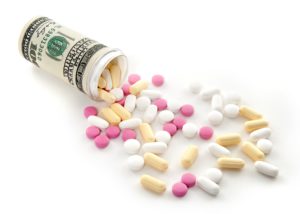Big Pharma prioritizes profits over patients. Here’s proof:
 Pharmaceutical companies say they must raise the cost of your prescription drugs to pay for the research and development (R&D) of cutting-edge medications.
Pharmaceutical companies say they must raise the cost of your prescription drugs to pay for the research and development (R&D) of cutting-edge medications.
But you are not the No. 1 priority. Shareholders are.
A new study reveals the United States has the highest drug prices in the world because drug companies spend billions of dollars to boost their stock prices and maximize shareholder value. It’s legal and happens in other industries – such as banking and technology. But it drives up your costs.
“Price gouging in the U.S. pharmaceutical drug industry goes back more than three decades,” writes William Lazonick, an economics professor at the University of Massachusetts and lead researcher of a report titled “U.S. Pharma’s Financialized Business Model.”
Despite claims from Big Pharma that R&D investment is critical, Lazonick and his team found that 18 U.S. drug companies listed on Standard & Poor’s 500 index distributed 99 percent of their profits to executives and shareholders from 2006 to 2015.
The companies spent a combined $516 billion to buy back their own shares and pay shareholder dividends. That’s $51 billion more than the companies spent on R&D during the same time. Some companies have not introduced new blockbuster drugs to the market. They rely instead upon profits from existing (and expiring) patents.
“There’s no shortage of spending on R&D in the U.S. economy, and no shortage of spending on life sciences,” Lazonick told The New York Times. “But there really is very little drug development going on in companies showing the highest profits and capturing much of the gains.”
How have you or a loved one been affected by rising drug prices? Share your story with Voices for Affordable Health.